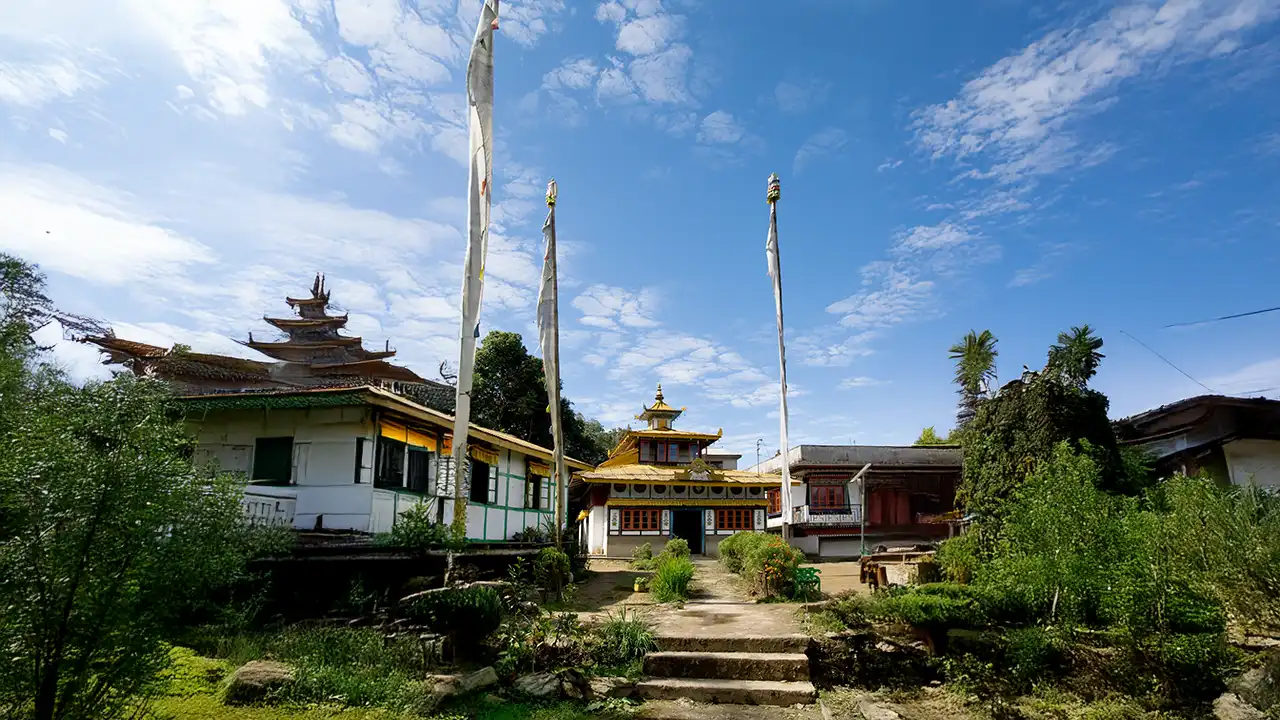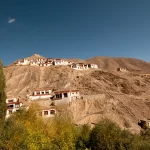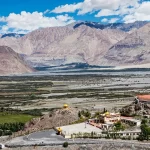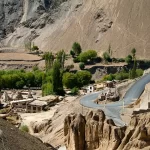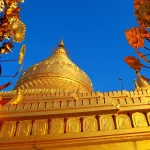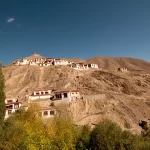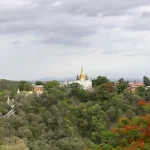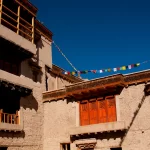The Rumtek Monastery, situated in the rolling hills of Sikkim, is India’s most sacred Buddhist monastery and the state’s largest. Also called the Dharma Chakra Centre, the 16th-century spiritual hub, reconstructed in the 1960s, is the seat-in-exile of the Gyalwa Karmapa, the leader of the Karma Kagyu school of Tibetan Buddhism.24 kilometers from Gangtok at an elevation of 5,500 feet, Rumtek Monastery offers spectacular views of the Eastern Himalayas, where divine peace coexists with architectural splendor. This explores its history, architecture, cultural significance, festivals, and travel tips, SEO-keyworded with extensive keyword application for “Rumtek Monastery,” “Sikkim,” and “Buddhist pilgrimage.”
History and Heritage of Rumtek Monastery
The history of Rumtek Monastery is full of richness, starting in the 16th century when it was founded in Tibet by the 9th Karmapa, Wangchuk Dorje. The present monastery in Sikkim was erected in 1959 by the 16th Karmapa, Rangjung Rigpe Dorje, who escaped from Tibet following the Chinese occupation. Looking for a new residence for the Karma Kagyu lineage, he chose Rumtek, prophesied by the 12th Karmapa, Changchub Dorje, who had previously explored the property in the 18th century. The property was donated by Sikkim’s Chogyal (king) Tashi Namgyal and its building, overseen by Tibetan workers, was completed in 1966.
Rumtek also became the Karmapa’s exiled seat, sheltering sacred objects such as the Black Hat (Shamna) and 16th Karmapa throne. Succession controversy surrounding the 17th Karmapa since the 1990s has, however, drawn world attention, with two pretenders—Ogyen Trinley Dorje and Trinley Thaye Dorje—splitting devotees. Even so, Rumtek remains a spiritual shrine, with the visiting plans of the 17th Karmapa reaffirming its value as a Sikkim Buddhist pilgrimage site.
Architectural Magnificence of Rumtek Monastery
Rumtek Monastery is a magnificent piece of Tibetan architecture, located on the hill above the town of Gangtok. Its three-story main building, red, gold, and blue-painted, reflects traditional Bhutanese and Tibetan designs. The door, adorned with exquisite murals of the four guardian deities, opens into a stone courtyard where monks perform sacred Cham dances during festival seasons.
The main prayer hall (Tsuglakhang) is the focal point of Rumtek Monastery, housing a golden statue of Shakyamuni Buddha, flanked by the 16th Karmapa and Guru Rinpoche statues. Walls are adorned with bright thangkas, silk banners, and murals depicting Buddhist cosmology. There is a unique 10th-century thangka and a silver stupa with the relics of the 16th Karmapa inside in the hall. The Golden Stupa, which is turquoise and coral-decked, is the main attraction, guarded by a Dorje Drolo statue.
The Karma Shri Nalanda Institute, which lies next to the monastery, teaches monks Buddhist philosophy, and old books such as the Kangyur and Tengyur are kept in the library. The complex includes accommodation for 300 monks, a retreat center, and a nunnery at Keazong. The gardens which surround Rumtek, where prayer flags wave over the Himalayan horizon, complete Rumtek’s serene ambiance that makes it a choice location for Buddhist pilgrimage.
Cultural and Spiritual Significance
Rumtek Monastery is the spiritual hub of Sikkim, influencing the Buddhist culture of the Lepcha, Bhutia, and Nepali people. As the international headquarters of the Karma Kagyu order, it receives pilgrims in quest of blessings and teachings. Daily prayers and meditation classes held at the monastery provide comfort to pilgrims. Its school and institute educate young monks, upholding Tibetan Buddhist traditions.
Rumtek also projects Sikkim’s cultural heritage in terms of festivals, thangka paintings, and woodcarvings. Local life is also influenced by the monastery, with monks engaging in community welfare and education. The controversy over the Karmapa has not lessened its religious significance since pilgrims continue to visit, pulled in by its sacred relics and historical relationship with the Karmapas.
Festivals at Rumtek Monastery
Rumtek Monastery showcases vibrant festivals of Sikkim’s Buddhist culture. The Losar Festival (Tibetan New Year, February/March) welcomes the start of the year with prayers, banquets, and folk dances. The Guru Rinpoche Birthday, which is celebrated in the fifth Tibetan month (June/July), commemorates Padmasambhava with rituals and offerings.
The most spectacular of these festivals is the Mahakala Dance, held before Losar, which consists of masked Cham dances by monks to drive away evil spirits. The Tse-Chu Festival during Tibet’s fourth month includes sacred dances and the display of a gigantic Guru Rinpoche thangka. These kinds of festivals, held amidst Rumtek’s scenic hills, draw thousands, and therefore are best suited for indulging in Sikkim’s Buddhist pilgrimage culture.
Why Visit Rumtek Monastery?
Rumtek Monastery blends spirituality, history, and nature in a unique combination. Its serene environment, accompanied by panoramic views of Gangtok and Kanchenjunga, instills calmness among meditants and tourists alike. Golden Stupa, vintage thangkas, and festive events charm visitors, while Buddhist doctrine insights are offered at the Nalanda Institute. Ban Jhakri Falls, Ranka Monastery, and MG Marg in Gangtok are nearby and add to the experience.
For Buddhist pilgrims, Rumtek is a sacred site, housing relics of the Karmapas and a chance to connect with the Kagyu lineage. Adventure lovers can trek the trekking trails of Sikkim, as photographers capture the vibrant colours of the monastery against the Himalayan landscape.
Best Time to Visit Rumtek Monastery
The optimum time to visit Rumtek Monastery is March to May (spring) and September to November (autumn), when Sikkim weather is good and skies are clear for Himalayan views. Losar and Tse-Chu festivals take place during these months, giving a cultural experience. Winters (December–February) are cold with occasional snow, and monsoons (June–August) are heavy rain and slippery roads. Early morning visits ensure a serene experience before tourists flock.
How to Reach Rumtek Monastery
Rumtek Monastery is 24 km from Gangtok and is easily accessible by road from Sikkim and West Bengal’s major cities.
By Air: Pakyong Airport (30 km, 1 hour drive) is the nearest airport. Bagdogra Airport (124 km, 4–5 hours) in Siliguri is a busier one, with buses and taxis to Gangtok.
By Train: Nearest is New Jalpaiguri (NJP) Station (117 km, 4–5 hours), and then taxi or shared jeep to Gangtok and Rumtek.
By Road: From Gangtok, taxi (INR 500–800) or shared jeep (INR 50–100) for a 45-minute journey. The road goes through hills and green forests.
Non-residents are required to carry an Inner Line Permit (ILP), which can be downloaded or purchased in Gangtur/Siliguri for INR 200. The monastery takes INR 10 as an entry fee.
Travel Tips for Rumtek Monastery
Respect Customs: Dress modestly, take off your shoes at the prayer hall, and don’t point towards statues. Photography is not allowed inside the main hall.
Altitude Adjustment: Acclimatize to 5,500 feet to avoid altitude sickness. Drink plenty of water.
Connectivity: Roads are well-maintained, but check weather updates during monsoons. Carry cash, as ATMs are scarce.
Accommodation: Stay in Gangtok’s hotels or Rumtek’s guesthouses. Book early during festivals.
Explore Nearby: Visit Lingdum Monastery, Temi Tea Garden, or Namchi’s Char Dham for a fuller Sikkim experience.
Rumtek Monastery in Sikkim is a cultural and spiritual gem, reflecting the true spirit of Tibetan Buddhism in the Eastern Himalayas. Its 500 years of history, magnificent architecture, and colourful festivals make it the fulcrum of Buddhist pilgrimage and one of Sikkim’s most prominent tourist attractions.

